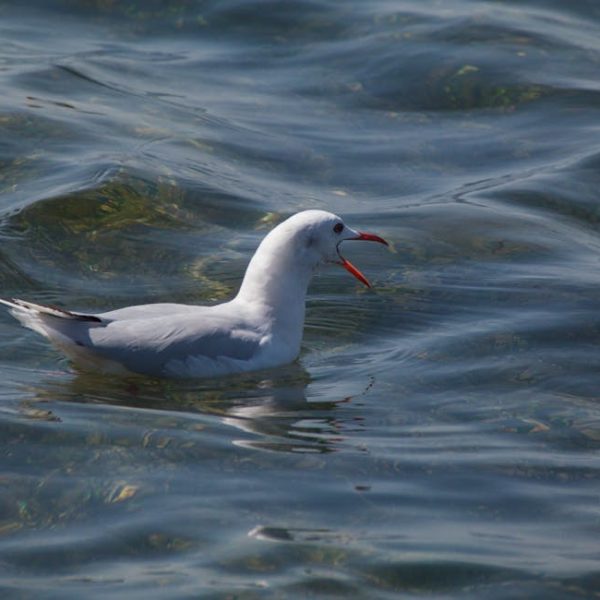Birds are most active during dawn and dusk hours. The time spent feeding, singing, and engaging in other activities largely depend on their daily cycle, which is innately tied to the natural light patterns of day and night. With this, understanding the daily cycle of birds’ activities can significantly increase your success and enjoyment in birdwatching.
Understanding Bird’s Daily Cycle
Birds follow a fascinating daily pattern predicated upon many factors, such as light, temperature, and food availability. The usual routine commences at dawn when birds wake up to feed, taking advantage of the cooler temperature and light. As the day wears on, many species opt for a midday rest to conserve energy during the hottest part of the day. As dusk approaches, birds start their evening routine, usually another round of feeding, before they finally roost for the night.
Key aspects of a bird’s daily cycle include:
- Dawn feeding: This is when most birds are on the hunt for their breakfast.
- Midday resting: Birds conserve their energy when the sun is at its peak.
- Dusk feeding: Birds will again search for food to replenish energy spent throughout the day.
- Nighttime roosting: Birds settle into their nests or roosts for the night.
Birds Activity in the Morning
Birdwatching in the morning is truly a spectacle. This is when you’ll find birds not only looking for food but engaging in a grand display of vocalizations known as the ‘dawn chorus.’ Early morning is an optimal time for birds to sing and claim territories as the cooler air and less ambient noise allow their songs to travel further.
To maximize birdwatching opportunities in the morning:
- Start early: Birds start their day at the crack of dawn so try to follow their schedule.
- Listen for the dawn chorus: Bird songs are usually loud and clear in the morning.
- Look around feeding areas: Birds actively search for food in the morning.
Comparatively, morning birdwatching holds specific advantages. The air is cooler, making the bird’s songs clearer. The birds are also more active, intensifying their songs to assert their territories, making it a delightful experience for any birdwatcher.
Birds Activity in the Afternoon
Come afternoon, birds’ activities follow a different rhythm. Many species rest during the heat of the day, only becoming active again when temperatures drop. However, they’re once again on the search for food, compensating for the energy they’ve spent throughout the day.
Prepare for birdwatching in the afternoon with the following checklist:
- Hydrate: Temperatures are usually higher in the afternoon.
- Be patient: Birds may not be as active since many are resting.
- Check shady spots: Birds tend to stay out of the sun during the hot times of the day.
Birds Activity in the Evening
As the day transitions into evening, bird activity picks up again. Birds begin returning from their daytime activities to their nests. Some use this time to consume more food, essential for surviving the upcoming night. Twilight can also be a prime time for many species of birds, including owls and nighthawks.
When birdwatching in the evening:
- Time it perfectly: Activity usually peaks during twilight.
- Pay attention to sounds: Some birds are more vocal during this time.
- Look for returning birds: Many birds return to their nests in the evening.
Comparing evening birdwatching to other times of the day, it provides the unique opportunity to see and hear nocturnal birds. However, since light levels are lower, visual observation might become more challenging.
Influence of Seasons on Bird’s Activity
Birds’ behavior is markedly influenced by changes in season. In spring, birds are typically engaged in breeding. Over the summer, you might enjoy watching parental birds feeding their offspring, while autumn is time for many birds to migrate. Winter usually witnesses birds in survival mode, with some species displaying interesting foraging behaviors to fight off the chills.
Here are some common bird behaviors during each season:
- Spring: Mating, nesting, and singing to attract mates
- Summer: Rearing offspring and feeding
- Autumn: Migration and preparing for winter
- Winter: Foraging and surviving harsh conditions
By understanding the rhythm of birds’ daily cycle and seasonal influences, you can plan your birdwatching activities optimally. Remember, patience and observation are the keys to a successful birdwatching experience. So, follow these tips, head out and enjoy the lovely world of birds. Happy birdwatching!
Key Takeaway:
- Birds come most to life during dawn and dusk, where they feed and often engage in display behaviors like singing or territorial markings.
- Morning birdwatching offers a cool, clear acoustic environment for hearing bird songs, particularly the ‘dawn chorus.’
- Afternoon birdwatching can be challenging due to the high temperatures that tend to drive many birds to rest in the shade, but birds looking to eat again before nightfall can be spotted.
- Evening birdwatching affords the rare chance to observe nocturnal birds, despite lower light conditions.
- The changing of the seasons profoundly impacts bird behavior and appearances, with spring and fall considered particularly exciting times for birdwatching due to breeding and migration activities.
Birdwatching can be a deeply rewarding experience, offering engaging connections with the world of birds in varying environments and unique behaviors. By understanding their daily and seasonal rhythms, you’re better equipped to make the most out of your birdwatching adventures and builds lasting, precious memories under feathers and wings.
FAQs
Q: Do all birds follow the same daily routine?
A: While many birds do follow a similar daily cycle of dawn and dusk feeding, midday resting, and nighttime roosting, the particular routines can vary widely among species. Factors such as their feeding habits, environmental conditions, and breeding periods can influence these routines.
Q: What’s the best time of day to observe birdsong?
A: Early morning, just after dawn, is often the best time to observe bird songs. Most birds use this time of day, known as the ‘dawn chorus,’ to claim territories and attract mates. The cool morning air and typically quieter surroundings allow their songs to travel further.
Q: Are there specific seasons when birdwatching is more rewarding?
A: Spring and fall are considered most rewarding for birdwatching. Spring marks the breeding season where you might observe courting behavior and fledgling birds, while fall is a key migration period for many species.
Q: Can you still spot birds when it’s raining?
A: Yes, some birds still carry out their routine activities in light rain, but heavy rainfall usually sees birds taking shelter. Also, the presence of birds during rain may vary by species and geographic location, with some birds more adapted to wet conditions.
Q: How can I attract more birds to my garden for birdwatching?
A: Creating a bird-friendly environment is key. This includes installing feeders, providing a clean water source, and possibly planting native vegetation that provides natural food and shelter. Nest boxes can also attract birds that are looking for a safe place to breed and raise their young.
Enjoy birdwatching and don’t forget to share your experiences with us. Find more informative articles by exploring our website.












